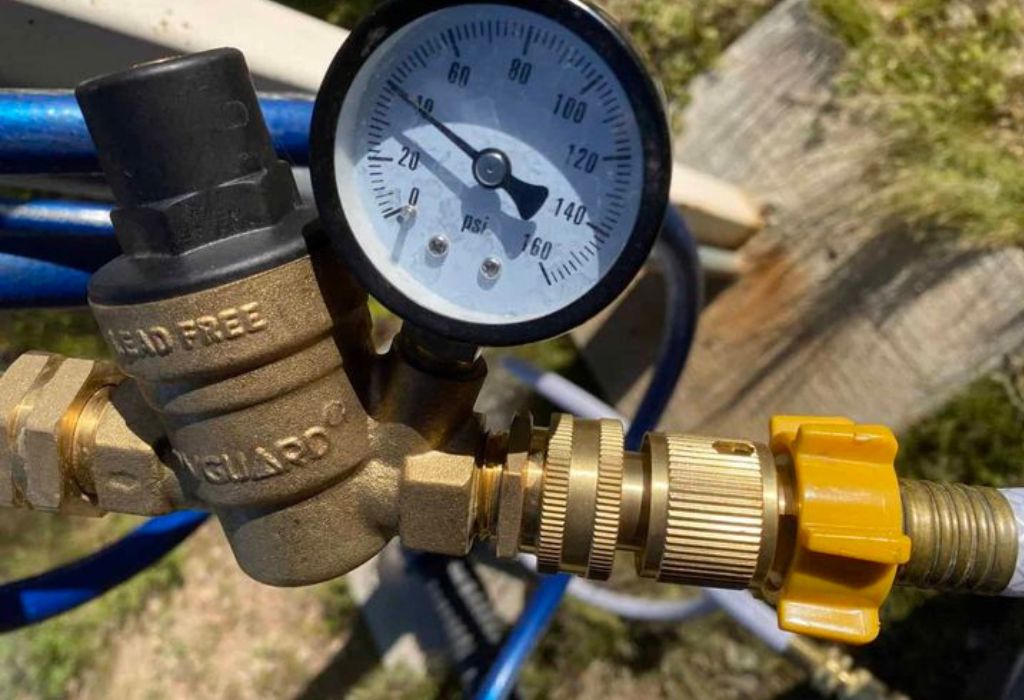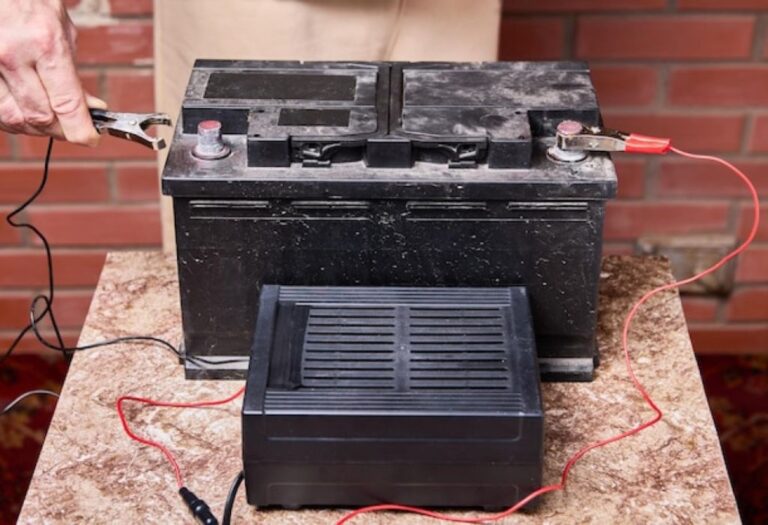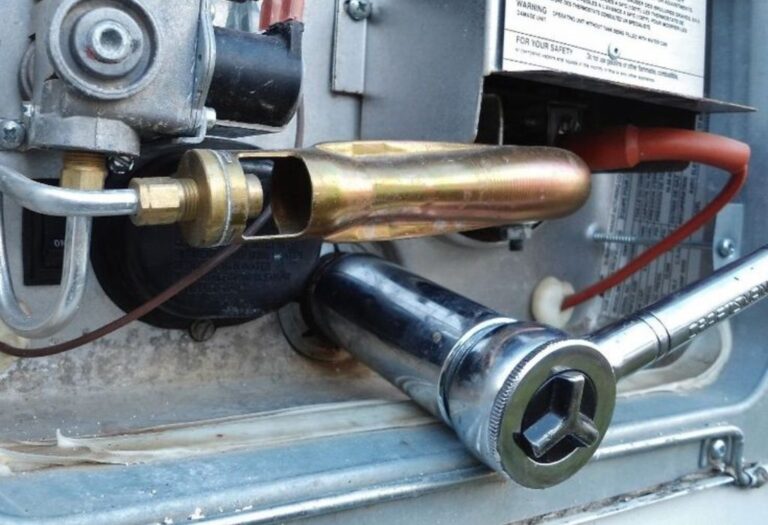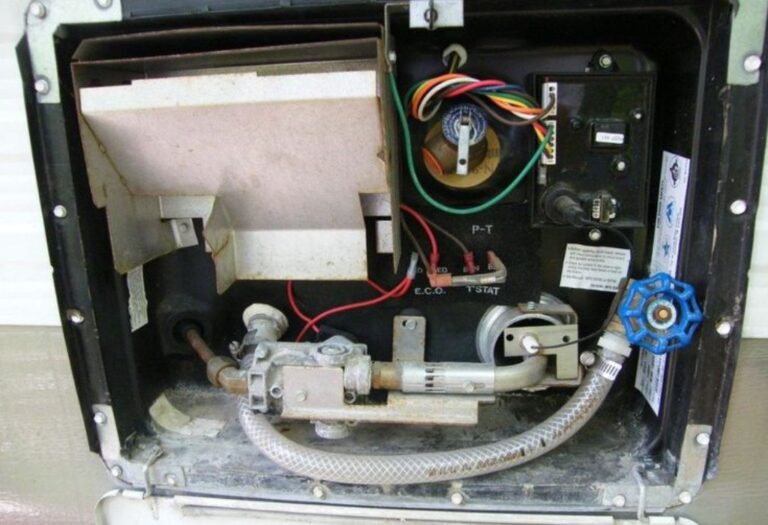Do I Need a Water Pressure Regulator for My RV?
Imagine pulling into a quiet campground after hours on the road.
You hook up your RV to the city water supply, twist the faucet, and hear a loud pop.
Within seconds, water sprays across the floor, soaking your belongings.
That’s not a freak accident — it’s a burst pipe caused by excessive water pressure.
Many RVers assume that campground water systems are always safe.
But that’s far from the truth.
Water pressure can fluctuate dramatically from one site to another.
Some campgrounds deliver as little as 30 PSI, while others exceed 100 PSI — enough to destroy RV plumbing instantly.
That’s where a water pressure regulator becomes essential.
It’s a small, inexpensive device that keeps water pressure stable and safe.
By reducing excess force from the campground supply, it protects pipes, fittings, and appliances.
Without it, one bad hookup could lead to leaks, cracked fittings, or even a flooded interior.
Most RV plumbing systems are designed to handle between 40 and 60 PSI.
Anything higher puts your plumbing at serious risk.
That’s why seasoned RVers never connect to campground water without a regulator.
It’s cheap insurance for peace of mind on every trip.
In this guide, you’ll learn why every RVer needs a water pressure regulator, how it works, and what pressure range is considered safe.
You’ll also discover how to choose the right type, install it properly, and maintain it for years of reliable use.
By the end, you’ll know exactly how to protect your RV from water pressure problems — and avoid costly repairs
What Does a Water Pressure Regulator Do?

A water pressure regulator controls and stabilizes the amount of water pressure flowing into your RV. It acts like a safety valve, preventing sudden surges that can damage your plumbing, fittings, and appliances.
Inside the device, a spring-loaded diaphragm reacts to the incoming pressure. When it’s too high, the spring compresses and restricts flow; when it’s low, it opens up to maintain steady output. This self-balancing system ensures consistent water delivery to every part of your RV.
Most regulators are made of brass or stainless steel for durability. Brass is especially popular due to its corrosion resistance and longevity. There are two main types: fixed regulators (preset PSI, often around 45 PSI) and adjustable regulators (you can manually set the PSI).
In short, this small device acts as the first line of defense for your RV plumbing system. It may slightly reduce your flow rate, but it guarantees that your water stays within safe limits — saving you from expensive damage and unnecessary repairs.
Common Questions and Answers
What is a water pressure regulator?
It’s a device that keeps incoming water pressure from exceeding safe limits for your RV.
Does it protect against sudden spikes?
Yes, it absorbs and reduces high-pressure surges before they reach your plumbing.
Can it lower water flow?
A little, but it ensures stable, safe water delivery to your fixtures.
Is it adjustable?
Some are preset, while adjustable ones let you customize PSI levels.
Which material lasts longer?
Brass regulators offer better durability than plastic alternatives.
Why RV Owners Recommend Using One
Many RV owners swear by water pressure regulators because they’ve seen what happens without them. Campgrounds often vary in infrastructure — some have well-maintained systems, while others use outdated pipes that deliver wildly inconsistent pressure.
An unregulated connection may work fine at one campsite but destroy your plumbing at the next. Campground water can fluctuate as other campers connect or disconnect their hoses, causing sudden spikes that easily reach 100 PSI or more.
A regulator prevents this chaos. It ensures steady, predictable water flow, protecting your faucets, water pump, and heater. Even more importantly, it stops small leaks from becoming major problems over time.
Veteran RVers often consider regulators “cheap insurance.” Spending $20–$60 once can prevent thousands in repairs and downtime. It’s one of the simplest yet smartest accessories you can own.
Common Questions and Answers
Can campground pressure really damage my RV?
Yes, high pressure can burst hoses and crack fittings.
Do all campgrounds have high pressure?
Not all, but many exceed safe limits, especially in older systems.
Isn’t my RV already protected?
Most RVs don’t have built-in regulators strong enough for fluctuating external pressure.
Is it worth the cost?
Absolutely — regulators are affordable and prevent costly damage.
Do professionals recommend them?
Yes, nearly every RV technician and manufacturer does.
What Is the Safe Water Pressure for an RV?
RV plumbing is delicate compared to home systems. Most are rated for 40–60 PSI, though some premium models handle slightly higher levels. Exceeding this range can cause leaks, blown seals, or broken fixtures.
Campground water systems, on the other hand, often exceed 80–100 PSI. That’s why regulators are essential — they reduce the pressure to a safe, steady flow suitable for your RV’s components.
Using a pressure gauge helps verify your PSI. Adjustable regulators with built-in gauges allow you to fine-tune settings for each campground, ensuring consistent performance regardless of local pressure variations.
As a rule of thumb, keep your regulator between 45–50 PSI for normal use. Lower the setting slightly if your RV has older or lightweight plumbing.
Common Questions and Answers
What’s the ideal pressure range?
Between 40 and 60 PSI, with 50 PSI being ideal for most RVs.
Can too little pressure be a problem?
Yes, it can result in weak water flow at sinks or showers.
Should I test campground water pressure?
Always — use a gauge before connecting to your RV.
What if the pressure exceeds 100 PSI?
Never connect directly. Use a regulator immediately.
Is the pressure consistent everywhere?
No, it fluctuates throughout the day based on campground demand.
Types of RV Water Pressure Regulators

There are several kinds of regulators available, each with unique advantages. The two main categories are fixed and adjustable regulators.
Fixed regulators are preset to a specific PSI, usually around 45. They’re easy to use — just attach and forget. However, they don’t allow fine-tuning, and cheaper plastic versions may not be accurate.
Adjustable regulators come with a screw or dial to set the pressure level manually. Many include a gauge for real-time readings, which is great for monitoring performance at different campgrounds.
You’ll also find brass models that offer durability and corrosion resistance, as well as stainless-steel regulators designed for heavy-duty or full-time RV use.
Common Questions and Answers
What’s better — fixed or adjustable?
Adjustable gives more control; fixed is simpler and maintenance-free.
Is a pressure gauge necessary?
Highly recommended — it lets you see real PSI levels.
Do plastic regulators work?
They work but wear out faster and can leak under high pressure.
Which material is best?
Brass regulators balance durability, accuracy, and value.
Are all regulators universal?
Most fit standard RV water connections, but always check thread size.
How to Install a Water Pressure Regulator
Installation is quick and straightforward. Always connect the regulator at the campground spigot, not at your RV inlet. This ensures your entire hose and filter system are protected.
Start by turning off the water supply. Attach the regulator directly to the spigot, followed by any filters or hoses. If using Teflon tape, apply it to the threads to prevent leaks.
For adjustable models, set the PSI before turning on the water. Open the spigot slowly to pressurize the system. Check for leaks and confirm output pressure using your gauge.
Recheck your pressure every few trips to make sure your regulator is still functioning correctly.
Common Questions and Answers
Where should the regulator go?
At the campground spigot — the first connection point.
Do I need tools to install it?
No, it’s hand-tightened; just avoid over-torquing.
Should I use Teflon tape?
Yes, to create a watertight seal on threads.
Can I adjust pressure afterward?
Yes, use the gauge and turn the adjustment screw slowly.
Should I leave it on when traveling?
No, disconnect and store it safely after each trip.
Common Issues and Troubleshooting Tips
Even the best regulators can face problems after long use. The most common issue is restricted flow due to internal sediment buildup. Regular flushing helps prevent this.
If water pressure seems weak, check for clogs in your regulator, hose, or filter. Sometimes debris from campground pipes gets trapped in the valve.
Leaks around the fittings usually result from worn-out washers or loose connections. Replacing rubber seals or using fresh Teflon tape often fixes the issue.
Cold weather can also damage regulators, especially if water freezes inside. Always drain and store them properly during winter.
Common Questions and Answers
Why is my flow so low?
Your regulator might be clogged or set too low.
Can freezing ruin it?
Yes, ice expansion can crack the housing.
Is it normal for regulators to leak?
Minor leaks may indicate worn seals or cross-threading.
Can I fix it myself?
Usually, yes — clean, flush, or replace washers.
When should I replace it?
Every few years or whenever performance declines.
Pros and Cons of Using a Water Pressure Regulator
A water pressure regulator offers many benefits, but it’s helpful to understand both sides before buying.
The advantages include plumbing protection, steady water pressure, and peace of mind. It prevents burst hoses and extends the lifespan of fittings and fixtures. It’s a simple, inexpensive safety measure every RVer can install.
The downsides are minimal. Some users experience slightly lower water flow, especially with cheaper regulators or smaller hoses. Regulators can also fail over time if not maintained.
However, the benefits far outweigh the drawbacks. For less than $50, you can safeguard your RV plumbing against thousands of dollars in potential damage.
Common Questions and Answers
Does it reduce pressure too much?
Only slightly — most good regulators maintain steady flow.
Is it hard to maintain?
Not at all; just clean and inspect periodically.
Do they wear out?
Yes, internal parts degrade after years of use.
Can I skip using one?
You can, but you risk damaging your RV plumbing.
Is it worth the money?
Absolutely — it’s one of the best low-cost RV accessories.
Maintaining and Testing Your Regulator

Maintenance keeps your regulator working for years. After each trip, disconnect it and flush out any trapped debris. Let it dry before storage.
If your regulator has a gauge, inspect it regularly for accuracy. Replace it if the needle sticks or readings seem off.
Every few months, test your water pressure using a separate gauge. This ensures your regulator is still performing correctly and maintaining safe PSI.
Lubricate O-rings and replace washers as needed. Over time, rubber parts dry out and lose elasticity, leading to leaks.
Common Questions and Answers
How often should I clean it?
After every few trips or when water flow decreases.
Do gauges need calibration?
Yes, check accuracy yearly and replace if faulty.
Can I leave it outside?
Avoid long-term exposure; UV and freezing damage materials.
What’s the lifespan of a regulator?
3–5 years with proper maintenance.
How do I know it’s failing?
Inconsistent water pressure or visible leaks.
Conclusion – A Small Tool That Saves Big Headaches
So, do you need a water pressure regulator for your RV? Absolutely. It’s not just a recommendation; it’s essential protection for your plumbing and appliances.
This small, affordable device prevents leaks, burst hoses, and damaged fixtures caused by unpredictable campground pressure. Whether you’re a weekend traveler or full-time RVer, a regulator keeps your water system safe and consistent.
Choose a reliable brass model, install it at the campground spigot, and check your pressure regularly. These simple steps ensure peace of mind every time you hook up to water.
Protecting your RV starts with controlling one of its most powerful forces — water pressure. Make it part of your setup routine, and you’ll avoid costly surprises on your next adventure.
I’m David R. Coleman, the founder, lead writer, and lifelong tool enthusiast behind GarageToolPro.com. With years of experience in automotive repair, woodworking, and home DIY projects, I created this platform to share practical tips, detailed tool reviews, and step-by-step guides that help mechanics, hobbyists, and homeowners get the job done right the first time.






